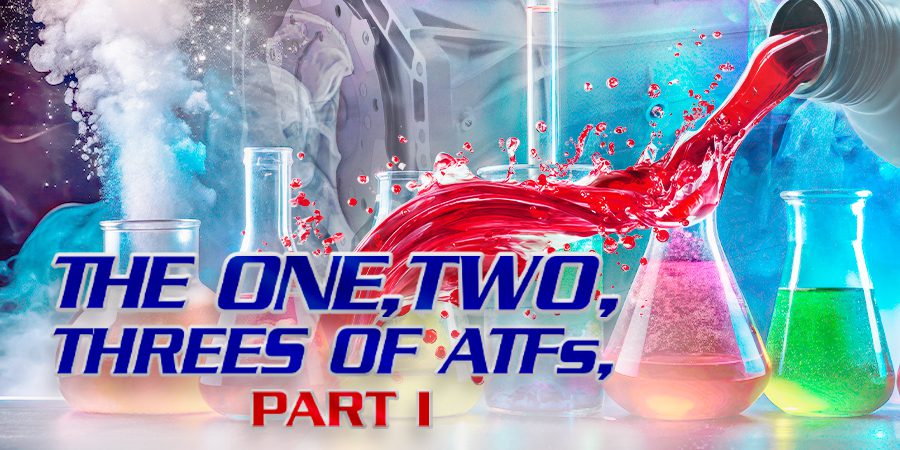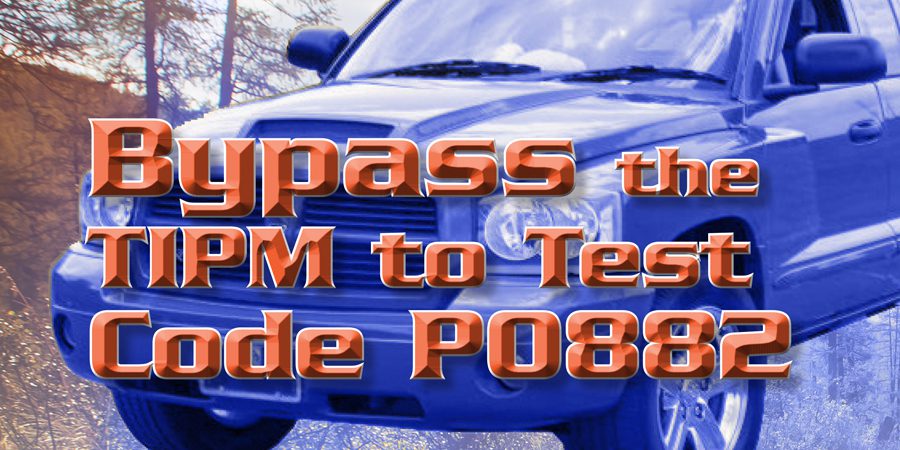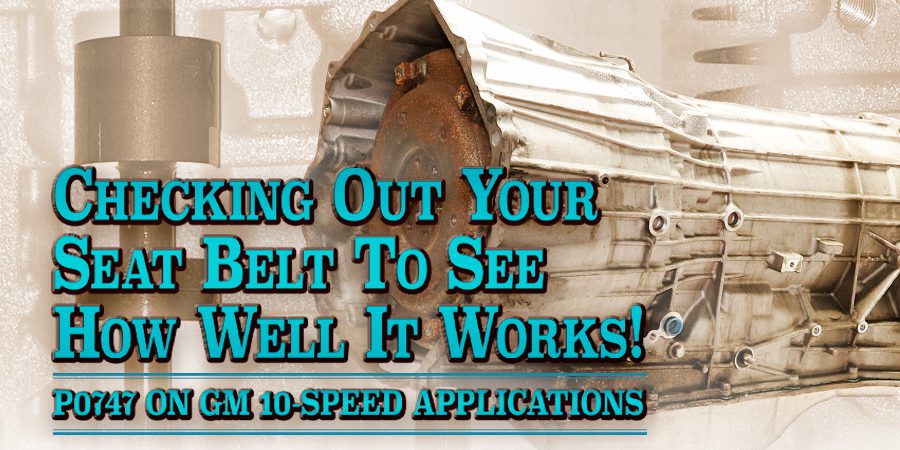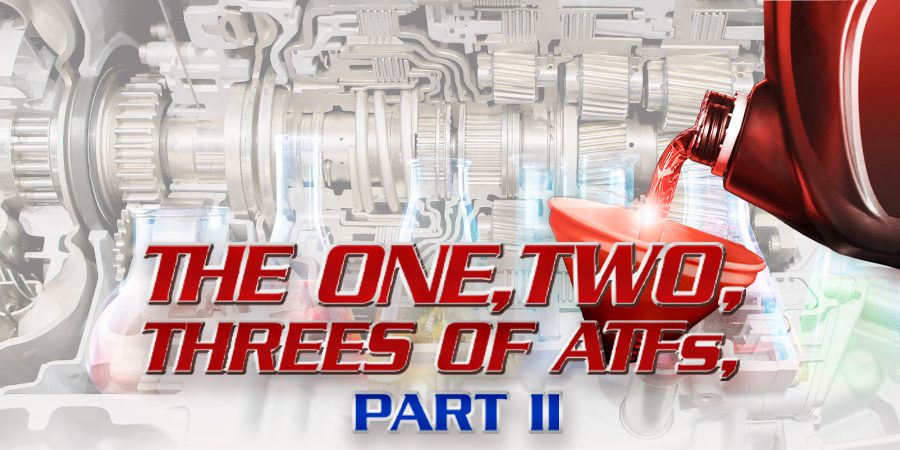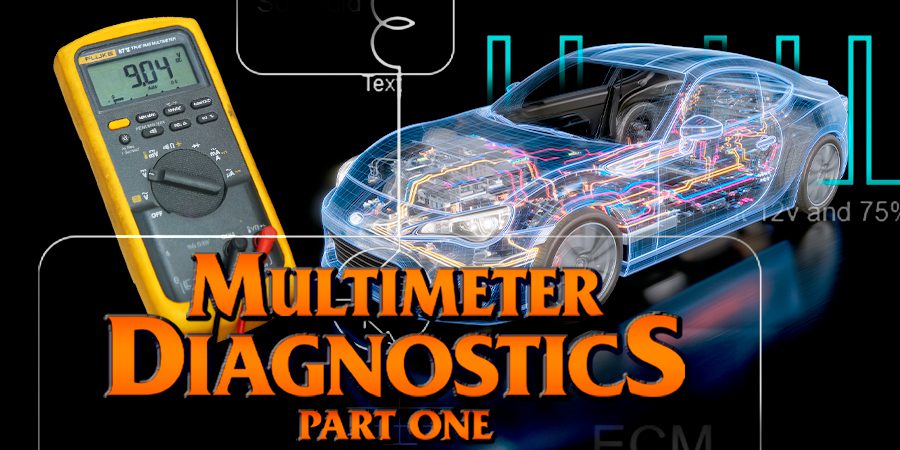There was a time when ATF (automatic transmission fluid) was specifically used to identify fluid for the step-automatic transmission. Today, there are three types of automatic transmissions that use ATF. This causes endless confusion for those who specify, sell, or use ATF to service the multiple OEM vehicles that are now requiring transmission service. When you look at these fluids from the standpoint of what is similar and what is different, there is much they have in common, until you get to the additive package. Each application requires a proper additive package to be the specified ATF for the type of automatic transmission you are trying to service. The three types are step-automatics (2-speeds up to 10-speeds) with distinct separate gears for each gear change, the CVT (continuously variable transmission) using sheaves and belts or chains to change the output speed, and DCT (dual clutch transmissions) that use dual shafts with hydraulic gear changes much like a manual transmission. Each type of transmission has specific fluid requirements that require a fluid of similar base oil types and operational viscosities, but very different requirements for frictional properties and drivetrain protection.
All three types of automatic transmissions use Group I, II, III, and IV base oils, depending on the company formulating the ATF and the OEM performance requirements. This has a lot to do with the cost and explains why some OE specified fluids are more expensive than others.
Group I: Solvent Freezing
These are the least refined of all the groups. Usually, a mix of different hydrocarbon chains with little or no uniformity. Generally used in less demanding lubricant applications or as the diluent for the additives that are mixed with it, for better solubility when the whole fluids are blended. Group I base oils have a viscosity index greater than or equal to 80 and less than 120.
Group II: Hydrocracking and Refining
Common petroleum oil-derived base stock for many ATFs and motor oils. Fair to good performance in volatility, oxidative stability, and flash points. Good performance in pour point, cold crank viscosity, and extreme pressure wear. Group II base oils have a viscosity index greater than or equal to 80 and less than 120.
Group III: Hydroisomerized and Refined
Although not chemically engineered, they are derived from petroleum oils, offering very good performance in a wide range of attributes as well as good molecular uniformity and stability. Commonly mixed with additives and marketed as “synthetic” ATF or engine oil in North America. Group III base oils will have a viscosity index greater than or equal to 120.
Group IV: Chemical Reactions, i.e., Synthetic
Very stable chemical compositions and highly uniform molecular chains. Group IV base oils like PAOs, which are synthetic hydrocarbons, meaning they are man-made rather than derived from crude oil, and are a type of synthetic lubricant made by polymerizing alpha-olefins. Known for its excellent thermal and oxidative stability, low volatility, and good viscosity-temperature characteristics. PAOs are common in high-end synthetic and synthetic-blend ATFs and motor oils.
Group V: Unclassified Ester-Based Reactions
Esters and polyol esters are both Group V base oils used in the formulation of ATF. Group V oils, in general, are not used as base oils themselves (with a few exceptions) but add beneficial properties to other base oils.
There are a few “tasks” the ATF must perform regardless of the type of automatic transmission.
- Transmits engine torque
- Controls the hydraulic system
- Applies clutches, brakes, sheaves, and mechatronics
- Operates and protects electromechanical solenoids/actuators
- Lubricates moving parts and prevents wear
- Removes heat from internal parts and electronics
- Provides long-term frictional stability for wet clutches
- Compatibility with all seal materials
- Stable viscosity for the life of the fluid
- Good hot and cold weather performance
- Compatibility with “yellow metals” and copper
Extended warranties have driven most OEMs to base oils that have superior oxidative stability and better anti-wear properties. Stable viscosity for the life of the fluid is one of the most important aspects of extended durability. Elevated operating temperatures in modern vehicles and extended service intervals have driven OEM ATF requirements to better fluids to reduce warranty costs. These better transmission fluids are a result of improved base oils and additive packages.
In order for the ATF to perform all of the functions necessary for thousands of miles with satisfactory performance, a number of additives, in varying amounts according to each transmission type, are added to the base oil to deal with the environment of close tolerances, high heat, rotating and moving components, extreme pressure and other frictional and anti-wear characteristics that degrade as time and temperature take their toll. Additive package components generally compose 5-15% of ATF fluid and vary based on the type of automatic transmission. Typical additive packages contain:
- Viscosity Improvers – ATF formulations often include viscosity index improving agents to maintain stable viscosity at high and low temperatures. A viscosity index improver is a polymer additive used in lubricants to minimize changes in viscosity as temperature fluctuates. Essentially, it helps maintain a more consistent “thickness” of the lubricant across a range of temperatures, ensuring optimal performance in various conditions.
- Pour Point Depressants – When temperatures inside the transmission are at the low end, viscosity increases and ATF does not flow well (like a bottle of cold honey). As a result, shift timing may be delayed, and slippage may occur on very cold days. This can be a major performance issue, with modern ATF performing well in the coldest environment because of “synthetic” base oils and pour point depressants.
- Oxidation Inhibitors – Oxidation inhibitors combat heat-related fluid breakdown. Surface temperatures of clutches and other components may reach over 650ºF. Therefore, ATF must have good thermal resistance. If not, deterioration due to heat causes a chemical reaction of the ATF to occur, leading to greater oxidation of its oil molecules, which cause the formation of varnish, sludge, and acids, which then circulate through the system, leading to internal damage to other components.
- Foam Inhibitors – ATF is violently churned and sheared in the torque converter. During periods of severe duty and high line pressure, the shearing of the ATF creates a tremendous amount of heat. The churning and shearing of fluid causes it to foam as air is mixed with the fluid. Foam reduces pressure and promotes slippage, wear, and oxidation. Foam inhibitors are added to the ATF to prevent air bubbles and also to reduce the lifespan of bubbles that do form.
- Corrosion Inhibitors – Water and oxygen cause rust formation or etching of metal components. Corrosion inhibitors coat and adhere to metal components, preventing moisture from accumulating and causing damage. Electronics and computers in automatic transmissions are also very susceptible to corrosion in wet tropical environments or coastal areas, with some synthetic base oils readily absorbing moisture from the humid conditions common to these locations.
- Friction Modifiers – Frictional properties in ATF are carefully balanced to provide satisfactory shift quality, prevent T/C shudder, and provide clutch durability. All ATFs (except the old Ford Type F) have some friction modifier. “Friction modification” means the friction characteristics of the fluid are engineered to allow “slip” under some conditions and “grab” under others, depending on the type of automatic transmission.
- Dispersants and detergents – As ATF ages, varnish and sludge deposition can coat surfaces unless detergents are present to remove contamination. These detergents, along with dispersants, hold the removed contamination in suspension until the ATF is serviced and replaced with fresh fluid.
- Anti-wear Agents – Anti-wear additive technology for automatic transmissions varies based on the type of automatic transmission technology used. CVTs and DCTs require higher levels of EP (extreme pressure) protection than step automatics. Phosphorus-based compounds are the primary anti-wear additive technology currently used in most step automatic transmissions, and also perform as friction modifiers.
- Extreme pressure additives – Extreme pressure additives are components added to lubricants that help prevent metal-to-metal contact when loads are extremely high. They work chemically with the metal surfaces to form protective films that shield them from scuffing, welding, and wear Common examples of extreme pressure additives include sulfur-based compounds and phosphorus-based compounds. EV-type transmission fluids contain minimal amounts of sulfur-based additives to protect the copper components in hybrid transmissions with electric motors.
- Dyes – At one time, all ATF was red because red dye was added to the fluid to identify it as automatic transmission fluid. Today, the color of ATF can be red, green, blue, yellow, or amber colored. Using a service fluid of the wrong color can lead to warranty denial by the OEM or an aftermarket warranty provider.
The additive formulation is a blend of any or all of these additives in varying amounts, making it a whole additive package that is determined by the type of automatic transmission it is formulated for. The OEM and oil company select the base oil that best meets their economic or performance requirements, combined with an additive package that best fulfils their performance, cost, and warranty requirements.
In Part II, we’ll cover the dynamics of the additive packages that make the fluid types unique for their application.


